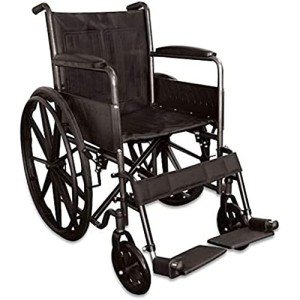Additional Wide Bariatric Wheelchair With 24" Seat
Frame
Wheelchairs are usually manufactured in a standard width of 16" (narrow grownup), 18" (standard grownup) or 20" (large grownup). However, some wheelchair users require a seat width broader than these requirements. These additional large bariatric wheelchairs are usually fitted by a professional and based on the user's measurements.
In order to get the most comfortable and secure ride for travelers, it is necessary that wheelchairs are correctly sized. This indicates that the wheelchair should have the ability to accommodate the user's size while having the ability to maneuver in tight areas. This is why BriteLift offers tailored vehicles to transport wheelchair guests. This includes vans that can safely drive and maneuver big wheelchairs, enabling them to feel safe and comfortable in every ride. This is the only way to provide the most effective transport for wheelchair travelers.

bariatric mobility equipment are larger than basic wheelchairs and are designed to accommodate people who are much heavier or wider. This additional large bariatric wheelchair from Medline includes a 24" seat and a carbon steel frame with rust- and chip-resistant chrome plating. The wheelchair has tool-free push-button adjustable footrests and easy-to-clean vinyl upholstery. It can support up to 500 pounds.
When selecting the best wheelchair width, it is important to measure the user sitting usually on a flat surface area across their best part of the lap which is usually their hips. It is likewise recommended that you utilize a yardstick instead of a determining tape as it tends to provide a more accurate measurement. If the user will be wearing a winter coat then an extra 2" ought to be contributed to the measurement of their seat width.
Weight Capacity
A bariatric wheelchair is typically larger and much heavier than basic wheelchairs. This is why they need more mindful maneuvering. Chauffeurs require to be trained in managing these travelers. Additionally, bariatric mobility aids require to have sufficient room for these chairs as well as ramps and wheelchair lifts. In addition, they need to understand how to arrange these rides ahead of time.
When selecting the chair width, it is essential to determine the user's widest point in the seat, which is typically the hips. Lots of wheelchair manufacturers likewise provide a yardstick that can be utilized to aid with this measurement. When measuring an individual's width, it is best to take the measurement straight across and not wrap the tape around their hips which can provide an incorrect reading.
Sometimes, the widest part of a person's thighs may be wider than their hips so this should be thought about when choosing the chair width. In these circumstances, it is often required to include an additional 2" to the chair width.
In basic, the weight capacity of a bariatric wheelchair should not be gone beyond under any scenarios or severe injury might result. When utilizing the chair, constantly be sure that it is on a stable and level surface with front casters pointing forward and wheel locks engaged. In addition, never lean or shift the center of mass while sitting in the chair.
